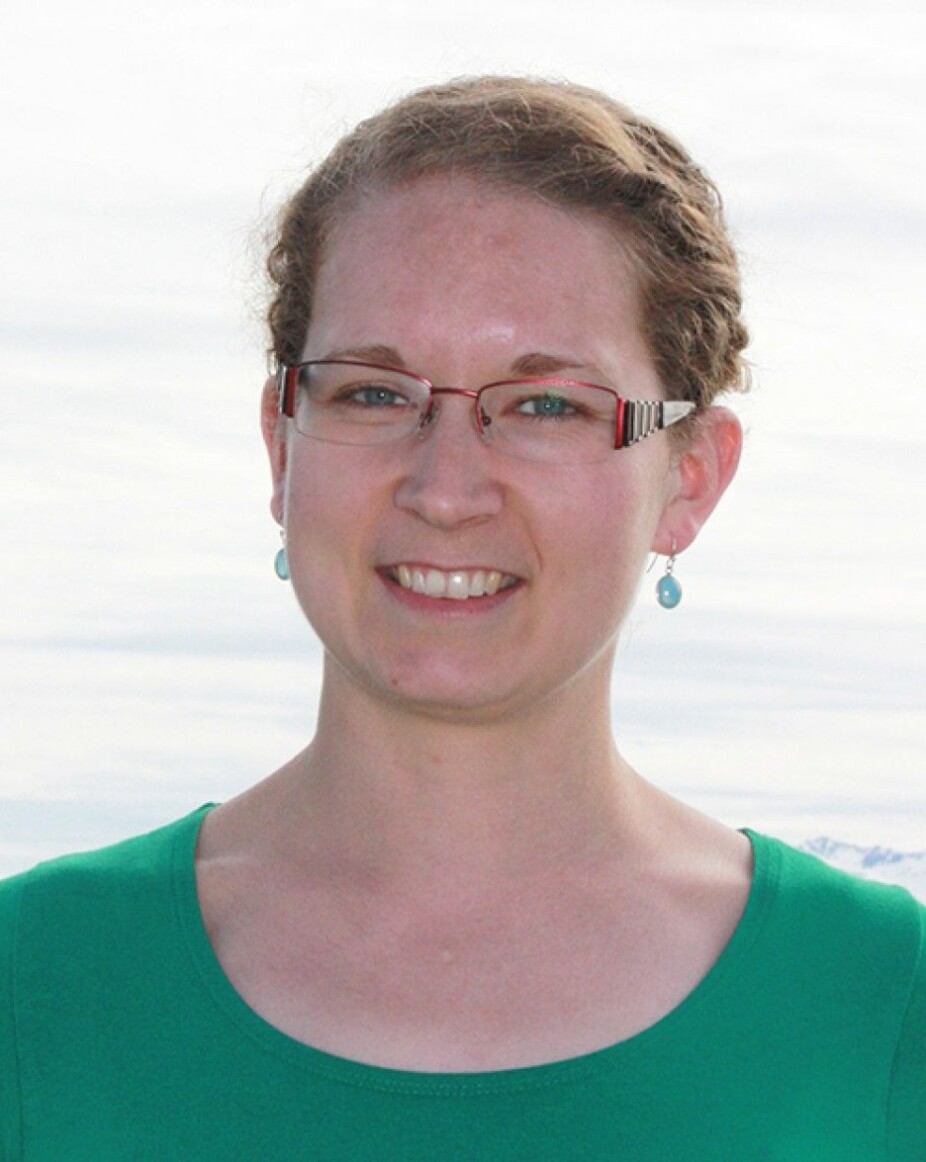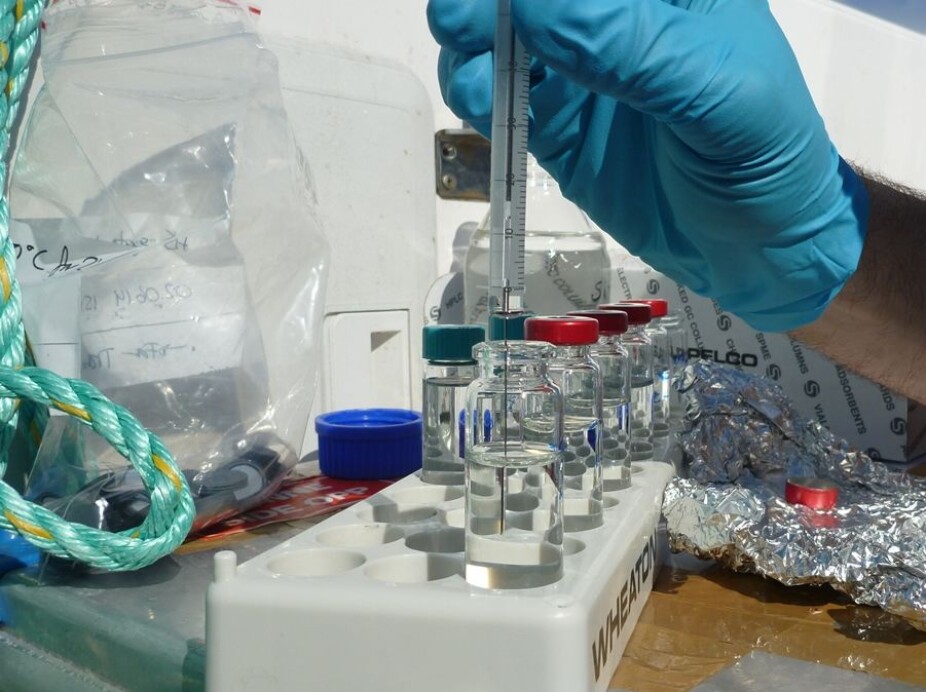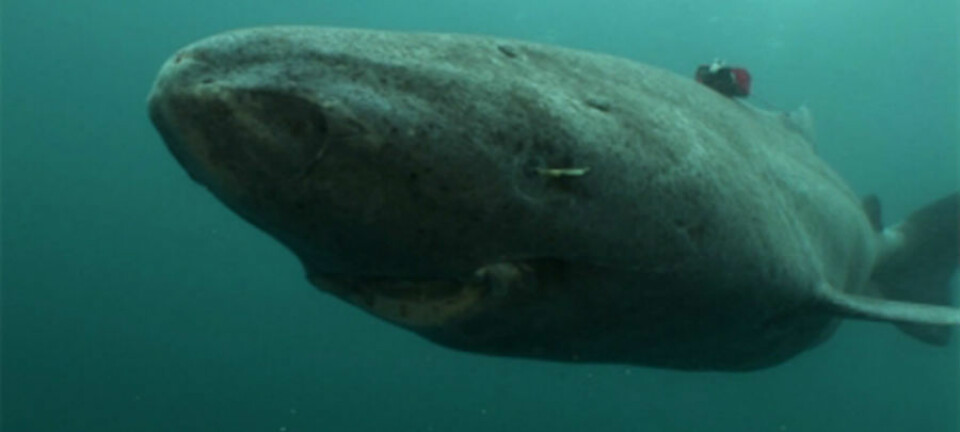This article was produced and financed by NILU - Norwegian Institute for Air Research

Siloxanes: Soft, shiny – and dangerous?
For the last decade, Norwegian scientists have had their eyes on the chemicals that make our hair shiny and our skin soft. Siloxanes have greased our daily life for many years, while slowly seeping out into our environment. Now the politicians are going to decide whether we can continue to use them – or not.
Denne artikkelen er over ti år gammel og kan inneholde utdatert informasjon.
"The production of siloxanes started in the 1940s", says post-doctoral fellow Ingjerd S. Krogseth at NILU – the Norwegian Institute for Air Research’s department of environmental chemistry in Tromsø.
"They are mainly used to produce silicone polymers. However, these compounds were soon found to be useful in other ways, particularly in the personal care and cosmetic products industry, where most use of some siloxanes now occurs."
Nowadays, siloxanes are important ingredients in deodorants, shampoos, skin creams and hair styling products. These are the substances that make the content smooth and easy to apply, and which carries the sweet smell.
"Just look at the list of ingredients on your flasks in the bathroom, you can probably find words like “cyclopentasiloxane” or “cyclomethicone” on several of them. When we use these products, the siloxanes either evaporate or are washed off and flushed down the drain, thus ending up in the environment", Krogseth explains.
1990s-2000s: Gaining attention
During the 1990s, scientists found that the siloxane known as D4 (octamethylcyclotetrasiloxane) induced toxic effects in several aquatic organisms. Therefore, production shifted to use less D4 and more of the siloxane substance D5 (decamethylcyclopentasiloxane) in personal care products.
Soon, siloxane compounds started to gain the attention of regulatory agencies, based on chemical model screenings for potential new contaminants in the environment.
"Models using data on the inherent properties of chemicals can help predict if chemicals have potential to be persistent, bioaccumulative (be able to pile up in living organisms) or undergo long-range transport in the environment", Krogseth says.
"In addition to toxicity, these criteria are used to decide whether a specific chemical should be regulated or not. However, model predictions need to be confirmed with actual measurements of these chemicals in the environment."

"Trace analysis of siloxanes presents a major challenge to analytical chemists. Not only do we bring these chemicals with us into the laboratory through use of personal care products, but they are also essential components in laboratory equipment", senior scientist Nicholas Warner at NILU says.
"This can affect results and lead to erroneous conclusions if the studies are not carefully carried out."
2005: Nordic findings
Warner says that it wasn’t until 2005 that NILU and the Swedish Environmental Research Institute (IVL), on behalf of the Nordic Council of Ministers and the then Norwegian Pollution Control Authority (now the Norwegian Environment Agency), analyzed and found high levels of siloxanes in samples taken from several locations in the Nordic countries.
In general, results for Norway, Sweden, Finland, Denmark, Iceland and the Faroe Islands showed high levels of siloxane contamination in areas near populated areas.
Warner tells that the Norwegian samples, gathered along the southern coast of Norway, the inner Oslo fjord and Lake Mjøsa, showed detectable levels of D4 and D5 within fish. Particularly alarming were the very high D5 concentrations observed in fish from the Oslo fjord, drawing concern over its bioaccumulation potential.
2006-2007: Confirmation
These findings resulted in the Norwegian Environment Agency putting D5 on their list of prioritized hazardous substances in 2006, with the aim to stop emissions of this chemical within 2020.
The 2005 findings also led to NILU, in collaboration with the siloxane industry and NIVA, conducting a follow-up study in 2007. Focusing on the Oslofjord area, samples comprised of sludge and effluent water from sewage treatment plants, fjord water, sediment, mussels, flounder, and cod were collected, and the findings from 2005 confirmed.
The measured concentrations were later rationalized through model simulations on how the siloxanes behave in the Oslo fjord environment, carried out by the University of Cranfield, UK, in collaboration with NILU.
"These model-measurement comparisons are immensely useful to highlight both what we understand – and especially what we don’t understand – about the behavior of siloxanes in the environment", Krogseth adds.
2008-2009: Setting standards
In 2008, Akvaplan-niva together with NILU and several other international partners did a screening of the Arctic for new contaminants, including siloxanes.
Nicholas Warner, then a postdoctoral researcher under the Contaminants in the Polar Regions (COPOL) project, presented these findings at the Workshop on Organosilicones in the Environment in Canada in 2008. He then moved on to organize a follow up study between NILU and the siloxane industry, to help confirm initial findings of siloxanes within Arctic biota with a new investigation around Svalbard in 2009 as part of the COPOL project.
"During this study, NILU and two other laboratories collected samples side by side, and incorporated several quality control procedures in order to accurately determine and minimize the amount of contamination the researchers themselves carry – so-called background contamination – during sample collection", Warner says.
This helped set quality control procedures to follow in further studies, to ensure accurate trace siloxane analyses in later publishing.
Warner further explains that the levels of siloxanes measured by the three labs were in good agreement, confirming the presence of siloxanes in the Arctic aquatic environment because of local wastewater emissions.

In addition to NILU and the siloxane industry, researchers at Stockholm University also took the lead in developing robust methods for siloxane analysis, and they developed the first method that could detect siloxanes at low concentrations in air. They also used a model that could reproduce measured concentrations of D5 in air in Sweden, and that at the same time predicted that siloxanes could probably undergo atmospheric transport to the Arctic.
"Thus, there were probably two sources of siloxanes in the Arctic; what is emitted through local sewage and can accumulate in the fish, and what may be transported here from areas further south via air", explains Warner.
2010: Bioaccumulation
"The analytical development that happened around 2010 set the foundation for many new discoveries about siloxanes in the environment", says Krogseth.
She started her PhD-studies on siloxanes around this time, financed by the Norwegian Research Council through the Miljø2015 programme.
In 2010, NIVA and Stockholm University discovered that siloxanes (D5) accumulated in aquatic biota in Lake Mjøsa, with higher concentrations being detected higher up in the aquatic food chain. This was underlined by a follow-up survey in 2012, when NIVA and Stockholm University confirmed that D5 bioaccumulate in fish in both Mjøsa and Randsfjorden.
"This came as a surprise", Warner says.
"Even if the concentrations of siloxanes we have found in fish are high compared to concentrations of classical contaminants like PCBs, several other studies in the Oslo fjord in Norway, Lake Pepin in the US and Lake Erie in Canada have shown concentrations of siloxanes to decrease as you proceed higher up in the food chain. This raises several questions about which factors influence the bioaccumulation potential of siloxanes."
"Could Lake Mjøsa somehow be different from the other environments?", Warner asks.

2011-2012: Airborne
While the main concern for siloxanes are aquatic organisms living in waters that receive wastewater effluents, the majority of siloxanes in the environment are present within the atmosphere.
"The larger part of the siloxanes in the products we apply to our bodies will volatilize and fly away with the wind", Krogseth explains, – perhaps all the way to the Arctic.
In 2011, she contributed to a study where D5 was measured in air at NILUs Zeppelin observatory on Svalbard.
"This supported earlier model simulations showing that siloxanes are able to undergo long-range atmospheric transport from source regions located further south, which is an important criteria to classify a chemical as an environmental pollutant. The measured atmospheric concentrations were 100-1000 times higher than for the classical pollutant PCB", Krogseth says.
However, siloxanes are not believed to be able to deposit from air to the Arctic ecosystems as efficiently as for example the PCBs or other classical persistent organic pollutants.
"We are still mostly concerned about the siloxanes released with wastewater effluents, as found by Warner and colleagues in their earlier study on Svalbard", she adds.
In 2012, D4 was also put on the Norwegian priority list for hazardous substances.
2013: Increased monitoring
While NILU scientist Linda Hanssen worked on her PhD at the Arctic University of Norway (UiT), she detected siloxanes in the blood of the general Norwegian population, represented by pregnant and postmenopausal women in Northern Norway.
"No significant relationship could be found between the siloxane concentrations in blood and the use of personal care products", Warner explains.
He adds that studies of other air-breathing organisms like seals have also shown that they, as well as humans, can eliminate the siloxanes more efficiently than water-respiring organisms.
The same year, NILU in collaboration with NIVA started conducting two monitoring projects involving siloxanes for the Norwegian Environment Agency: "Environmental pollutants in large Norwegian lakes", and “Environmental Contaminants in an Urban Fjord”.
In addition, NILU in collaboration with NINA monitors siloxanes in the project "Environmental pollutants in the urban and terrestrial environment”. Also in 2013, siloxanes were included in the monitoring program "Monitoring of environmental contaminants in air and precipitation" at the Zeppelin observatory on Svalbard.
2014: High concentrations in Tromsø
Parallel to the monitoring, new research projects on siloxanes were started. During the autumn of 2014, NILU collected water and sediment samples from wastewater emission sites around Tromsøsund to further investigate the siloxane exposure levels to the local aquatic environments surrounding Arctic communities.
According to Warner, they found very high concentrations of siloxanes in the wastewater effluent from outlets in Tromsø, ranging from 100 to 20 000 nanograms per liter.
"Some of the measurements of the effluent in Tromsø showed higher concentrations than similar measurements taken in cities with larger populations", he says.
"We believe the answer may be found in differences in wastewater treatment techniques. Most wastewater treatment plants in larger cities possess higher levels of treatment. However, Tromsø as well as many other communities within Northern Norway and the Arctic, have minimal or no wastewater treatment to aid in the removal of these chemicals."
Today onward
Warner and Krogseth are currently working on the NORDIC-LACS (Nordic lake exposure to cyclic siloxanes) project, funded under the Research Council in Norway’s Miljø2015 programme. Using both measurements and modeling, they will investigate siloxanes in an Arctic lake.
"Perhaps the results from this project as well as from Tromsø can shed further light on the behavior of siloxanes in aquatic environments and food chains, which is highly relevant with regard to processes that are currently happening on the political level", Krogseth says.
This relates to the fact that the European Chemical Agency (ECHA) published an opinion in April this year, stating that D4 and D5 are very persistent and very bioaccumulative substances. Following this, in June, ECHA opened a public consultation on a proposal from UK to restrict the use of D4 and D5. The proposal is to ban the substances in levels higher than 0.1 percent in personal care products that are washed off during normal use, such as shampoo, conditioner and soap.
The proposal is partly based on the presumption that siloxanes bioaccumulate in aquatic food chains, as was shown in Lake Mjøsa. However, as stressed by Warner and Krogseth, even if ECHA has concluded that D4 and D5 are bioaccumulative, this decision was largely based on laboratory-studies, while field-studies of bioaccumulation are still contradicting each other.
According to Warner, this might mean that other factors – still not clearly understood – may be important for how siloxanes accumulate in fish and other aquatic organisms.
The high concentrations of siloxanes that we measure in fish definitely cause reason for concern. However, there are still many unresolved questions remaining, with regard to their bioaccumulation, persistence, and toxicity. While it is important to take precautions, one must also not jump to conclusions, the two scientists round off.
———
Read the Norwegian version of this article at forskning.no


































